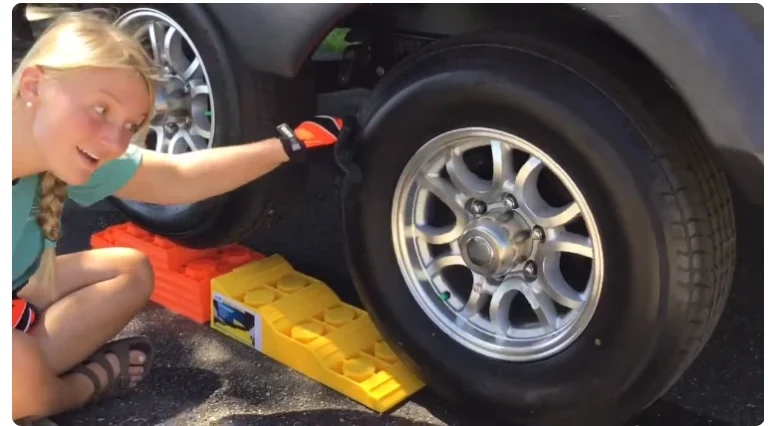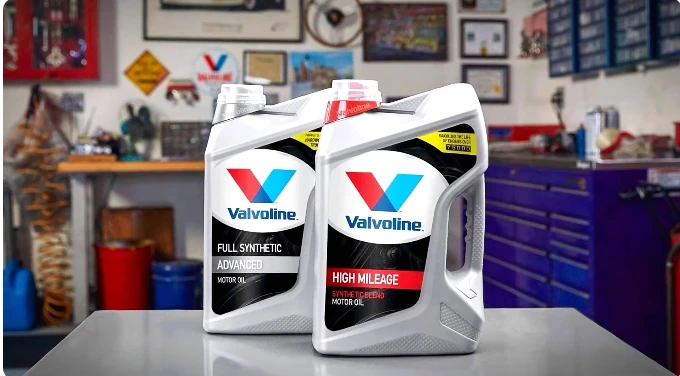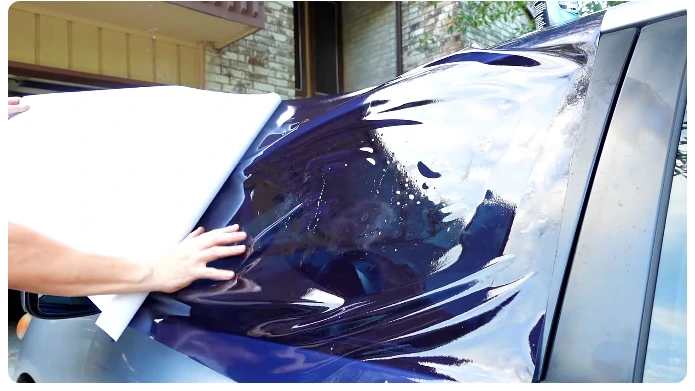How Long Can You Drive With An EVAP Leak?
Typically, you can drive a car with an EVAP leak for a limited period, but it’s best to get it fixed as soon as possible. The exact length of time you can drive will depend on the severity of the leak and your vehicle’s make and model.
EVAP System
The Evaporative Emission Control (EVAP) system is crucial for controlling fuel vapor emissions in your vehicle. It prevents harmful vapors from escaping into the atmosphere by trapping them and eventually recycling them back into the fuel system.
What Is an EVAP Leak?
An EVAP leak occurs when there’s a breach in the system, allowing fuel vapors to escape into the atmosphere. This breach could be due to a faulty gas cap, a cracked hose, or a damaged component. Common signs of an EVAP leak include the Check Engine Light (CEL), a noticeable fuel smell, and, in some cases, reduced fuel efficiency.
Factors Affecting Driving Time with an EVAP Leak
Driving with an EVAP leak isn’t advisable, but the duration you can drive with this condition depends on:
- Severity of the Leak: A minor leak might allow for more driving time than a major leak.
- Location of the Leak: If the leak is near critical components, the risk of additional damage or safety issues increases.
- Vehicle’s Make and Model: Some vehicles are more sensitive to EVAP system issues and might experience performance problems sooner.
Risks of Driving with an EVAP Leak
While you might be able to drive with a minor EVAP leak, it’s not recommended due to the following risks:
- Increased Emissions: An EVAP leak contributes to air pollution.
- Engine Performance Issues: Depending on the severity, you might experience rough idling, stalling, or reduced acceleration.
- Failed Emissions Tests: An EVAP leak is a common reason for failing emissions tests, potentially leading to fines or restricted driving.
- Potential for Fire Hazard: In extreme cases, an EVAP leak could pose a fire risk due to escaping fuel vapors.
Recommended Actions
If you suspect an EVAP leak, follow these steps:
- Check the Gas Cap: Ensure it’s tight and not damaged.
- Run Diagnostics: Use an OBD-II scanner to read error codes. Common EVAP-related codes include P0442, P0455, and P0456.
- Seek Professional Help: Visit a mechanic to confirm the leak and get a proper fix.
How to Prevent EVAP Leaks
To minimize the risk of EVAP leaks:
- Regular Maintenance: Regularly inspect and replace worn-out parts.
- Use Proper Gas Caps: Always use the recommended gas cap for your vehicle.
- Avoid Overfilling: Avoid topping off your gas tank to prevent excess pressure in the EVAP system.
Is it bad to drive with an evap leak?
Yes, driving with an EVAP leak is generally considered bad for several reasons:
Environmental Impact
An EVAP (Evaporative Emission Control) leak allows harmful fuel vapors to escape into the atmosphere. This contributes to air pollution and violates emissions regulations.
Safety Risks
While rare, a severe EVAP leak could pose a safety risk. Fuel vapors escaping from the EVAP system might increase the risk of fire, especially if they accumulate in confined spaces or near hot engine components.
Engine Performance Issues
An EVAP leak might lead to engine performance issues. Common symptoms include rough idling, stalling, or reduced acceleration. These issues can affect vehicle safety and drivability.
Check Engine Light and Emissions Tests
An EVAP leak will often trigger the Check Engine Light, signaling that something’s wrong. Additionally, if you need to pass an emissions test, an EVAP leak is a common reason for failing. Failing emissions tests can result in fines, additional repairs, and, in some cases, restricted driving.
Recommended Actions
If you suspect you have an EVAP leak, take these steps:
- Check the Gas Cap: A loose or damaged gas cap is a common source of EVAP leaks. Tighten or replace it if needed.
- Use an OBD-II Scanner: This tool can read error codes and help identify if the problem is related to the EVAP system.
- Seek Professional Help: If the Check Engine Light remains on, or if you suspect a more significant issue, it’s best to consult a mechanic for a proper diagnosis and repair.
What happens if you don’t fix an evap leak?
If you don’t fix an EVAP (Evaporative Emission Control) leak, several issues can arise, ranging from environmental impact to potential safety risks and vehicle performance problems. Here’s a breakdown of what could happen:
Increased Environmental Pollution
The primary function of the EVAP system is to prevent fuel vapors from escaping into the atmosphere. An EVAP leak allows these harmful vapors to escape, contributing to air pollution and increasing your vehicle’s environmental footprint.
Failed Emissions Tests
An EVAP leak is one of the most common reasons for a vehicle to fail emissions tests. This can lead to fines, increased inspection costs, and even restrictions on driving until the issue is resolved. In some jurisdictions, failing an emissions test might prevent you from renewing your vehicle registration.
Continuous Check Engine Light
An EVAP leak usually triggers the Check Engine Light (CEL). Ignoring this warning can make it difficult to detect other issues that might arise in the future. Additionally, a continuously lit CEL might cause anxiety for many drivers and make it challenging to sell or trade in the vehicle.
Engine Performance Problems
While an EVAP leak primarily affects emissions, it can also lead to engine performance issues. The leak might cause rough idling, stalling, or reduced acceleration, impacting overall drivability and safety. If left unchecked, these issues could worsen, potentially leading to more extensive damage or higher repair costs.
Safety Risks
Though rare, an EVAP leak could pose a safety risk. If fuel vapors escape near hot engine components or ignition sources, it could lead to a fire hazard. This is especially concerning in severe cases where a significant amount of fuel vapor is escaping.
Increased Repair Costs
Ignoring an EVAP leak can lead to increased repair costs over time. A minor leak can become more severe if not addressed, potentially affecting other components of the EVAP system or even the engine. The longer the leak persists, the more extensive the repairs might need to be.
What to Do If You Suspect an EVAP Leak
If you suspect an EVAP leak, here’s what you can do:
- Check the Gas Cap: Sometimes, a loose or faulty gas cap is the cause of the leak. Tighten or replace it if needed.
- Use an OBD-II Scanner: This tool can help you identify error codes related to the EVAP system, like P0442, P0455, or P0456.
- Seek Professional Help: If the Check Engine Light persists or the leak is severe, consult a professional mechanic for a proper diagnosis and repair.
Does evap affect how a vehicle runs?
Yes, the EVAP (Evaporative Emission Control) system can affect how a vehicle runs, although its primary function is to control emissions rather than directly influence engine performance. Here’s how EVAP issues could impact vehicle operation:
Engine Performance
- Rough Idling: A faulty EVAP system can cause rough idling or inconsistent engine behavior, especially if the leak leads to changes in air-fuel mixture.
- Stalling: Severe EVAP leaks could contribute to engine stalling, particularly at low speeds or when idling.
- Reduced Acceleration: If the EVAP system fails, it might indirectly affect engine performance, causing a loss of power or reduced acceleration.
Check Engine Light (CEL)
An EVAP leak is a common cause of the Check Engine Light (CEL) turning on. Although this doesn’t directly affect performance, a continuously lit CEL might make it difficult to detect other engine issues, potentially leading to more significant problems over time.
Fuel Efficiency
A significant EVAP leak might lead to reduced fuel efficiency. This occurs because the system is designed to capture and recycle fuel vapors. When there’s a leak, these vapors escape, resulting in potential loss of fuel that would otherwise be used by the engine.
Fuel Smell and Emissions
An EVAP leak might cause a noticeable fuel smell, both inside and outside the vehicle. While this doesn’t necessarily impact performance, it could be a safety concern and indicate excessive emissions, which can lead to failing emissions tests or regulatory issues.
Vacuum-Related Issues
The EVAP system relies on a series of valves, hoses, and a charcoal canister to maintain a certain level of vacuum pressure. If there’s a significant EVAP leak, this balance could be disrupted, potentially affecting other systems, like the engine’s air-fuel ratio or vacuum-operated components.
Diagnostic Trouble Codes
If the EVAP system has a problem, diagnostic trouble codes (DTCs) will be generated. These codes can indicate issues related to other engine functions, like fuel delivery or air intake, which could affect how the vehicle runs.
How much does an evap leak cost to fix?
The cost to fix an EVAP (Evaporative Emission Control) leak can vary widely depending on several factors, including the make and model of your vehicle, the severity of the leak, the specific component causing the issue, and labor rates in your area. Here’s an overview to give you a better idea of the potential costs:
Factors Affecting Cost
- Severity of the Leak: A minor leak, like a loose gas cap, will be cheaper to fix than a major issue, such as a damaged EVAP canister.
- Component Replacement: The cost will differ based on the specific part that needs replacement, such as the gas cap, EVAP purge valve, or charcoal canister.
- Labor Costs: Labor rates can vary significantly depending on the region and the complexity of the repair. Urban areas typically have higher labor costs.
- Diagnostics and Testing: Initial diagnostics, including using an OBD-II scanner, can add to the cost. More complex leaks might require smoke testing to locate the source of the leak.
Average Costs
- Gas Cap Replacement: If the EVAP leak is due to a faulty or loose gas cap, replacement might cost between $10 and $50, depending on the brand and vehicle type.
- Purge Valve Replacement: Replacing the EVAP purge valve generally costs between $100 and $200, including parts and labor.
- Charcoal Canister Replacement: The charcoal canister is a more expensive component. Replacing it can cost between $200 and $600, depending on the vehicle.
- Hoses and Lines: If the leak is due to damaged or cracked hoses, replacement can cost between $50 and $150, including labor.
- Comprehensive Repairs: For more complex EVAP leaks involving multiple components, costs can range from $200 to over $1,000, depending on the extent of the damage and the parts involved.
Additional Considerations
- Diagnostics: The cost of diagnostic testing can range from $50 to $150. If the leak is complex, additional smoke testing might be required.
- Warranty Coverage: Check if your vehicle is under warranty, as some EVAP-related repairs might be covered.
- DIY Repairs: If you’re comfortable with car maintenance, replacing a gas cap or even a purge valve could be done on your own, saving labor costs.
Will an evap code clear itself?
An EVAP (Evaporative Emission Control) code can clear itself, but it depends on several factors, including the nature of the problem, the condition of the vehicle, and how many drive cycles are completed without the issue recurring. Here’s a detailed explanation:
What is an EVAP Code?
An EVAP code is a diagnostic trouble code (DTC) that indicates a problem with the vehicle’s evaporative emission control system. Common EVAP codes include P0442 (small leak), P0455 (large leak), and P0456 (very small leak), among others.
How Codes Are Triggered
The EVAP system is designed to detect leaks and other issues that allow fuel vapors to escape into the atmosphere. If a problem is detected, the vehicle’s onboard diagnostics (OBD-II) system will trigger the Check Engine Light and store a specific DTC indicating the nature of the problem.
Clearing an EVAP Code Automatically
In some cases, the EVAP code can clear itself without intervention. This can happen if:
- The Issue is Temporary: If the problem was due to a temporary condition, like a loose gas cap, and is corrected, the code may clear after a certain number of drive cycles without the problem recurring.
- Drive Cycles: A drive cycle is a sequence of engine start-up, driving, and engine shut-off. If the system does not detect the issue over several drive cycles, the code may clear automatically. The number of cycles required can vary, but generally ranges from three to ten.
- OBD-II Self-Test: The OBD-II system periodically runs self-tests on various systems, including the EVAP system. If the tests consistently pass without detecting the original problem, the code may clear itself.
Manual Clearing of Codes
If the Check Engine Light persists and you believe the issue is resolved, you can manually clear the code by:
- Using an OBD-II Scanner: Many OBD-II scanners have a feature to clear stored codes. This is a quick way to reset the system.
- Disconnecting the Battery: Disconnecting the battery can sometimes reset the system, but this approach can also clear other stored data and is generally not recommended.
How to fix a small evap leak?
Fixing a small EVAP (Evaporative Emission Control) leak involves identifying the source of the leak and then addressing the problem. Since the EVAP system is designed to prevent fuel vapors from escaping into the atmosphere, a leak can trigger the Check Engine Light and impact emissions. Here’s a step-by-step guide on how to fix a small EVAP leak:
Step 1: Diagnose the Problem
- Check Engine Light: If your Check Engine Light is on, use an OBD-II scanner to read the diagnostic trouble codes (DTCs). Common EVAP-related codes for small leaks include P0442 and P0456.
- Visual Inspection: Perform a visual inspection of the EVAP system components, including the gas cap, hoses, and connections. Look for signs of wear, cracks, or damage.
- Smoke Test: If the leak source isn’t immediately visible, a smoke test can be used to locate the exact point of the leak. This is typically done by a professional mechanic using a smoke machine.
Step 2: Common Fixes for Small EVAP Leaks
- Tighten or Replace the Gas Cap: A loose or damaged gas cap is a common cause of small EVAP leaks. Ensure it’s tight and has a good seal. If it’s damaged, replace it with a new one.
- Replace Damaged Hoses: Check all hoses and connections for cracks or deterioration. Replace any damaged hoses with new ones. Use appropriate clamps and fittings to ensure a tight seal.
- Inspect the Purge Valve and Vent Valve: These valves control the flow of vapors within the EVAP system. If they are stuck open, it can cause a leak. Replace faulty valves if needed.
- Check the Charcoal Canister: Although less common, a damaged charcoal canister can cause an EVAP leak. If it’s cracked or clogged, it should be replaced.
Step 3: Clear the Check Engine Light
- Use an OBD-II Scanner: Once the leak is fixed, use an OBD-II scanner to clear the stored codes and reset the Check Engine Light.
- Drive Cycle: After clearing the codes, drive your vehicle through a complete drive cycle to ensure the problem is resolved. If the Check Engine Light stays off, the issue is likely fixed. If it comes back on, further investigation is needed.
Frequently Asked Questions
1: What is an EVAP Leak, and How Serious Is It?
An EVAP (Evaporative Emission Control) leak occurs when there’s a breach in the system that traps fuel vapors, allowing these vapors to escape into the atmosphere. The EVAP system is crucial for reducing emissions, so any leak is a concern. A small leak might not cause immediate driving issues but will increase emissions and trigger the Check Engine Light, leading to potential emissions test failures. Larger leaks can impact engine performance, causing rough idling or stalling.
2: How Long Can I Drive with an EVAP Leak Before It Becomes a Problem?
The length of time you can drive with an EVAP leak depends on the severity of the leak and the type of vehicle. Generally, a small leak might allow you to drive for a while without major issues, though it will cause emissions to increase and might eventually impact engine performance. However, driving with a significant EVAP leak is risky and can lead to engine problems, increased emissions, and potential safety hazards. It’s best to address an EVAP leak as soon as possible to avoid these risks.
3: Can an EVAP Leak Cause My Car to Break Down?
An EVAP leak might not immediately cause your car to break down, especially if it’s minor. However, if left unaddressed, it can lead to more serious issues. A large leak can disrupt the engine’s air-fuel mixture, leading to rough idling, stalling, or reduced acceleration, which could cause a breakdown. Additionally, if the Check Engine Light is triggered by an EVAP leak, other potential issues might be masked, increasing the risk of unexpected breakdowns. It’s crucial to fix an EVAP leak promptly to avoid these complications.
Additional Resources
For more information on EVAP leaks and vehicle maintenance, consider these resources:
- Environmental Protection Agency’s Vehicle Emissions Information provides in-depth information on emissions regulations.
- CarMD’s Vehicle Health Index offers insights into common vehicle problems and their solutions.




